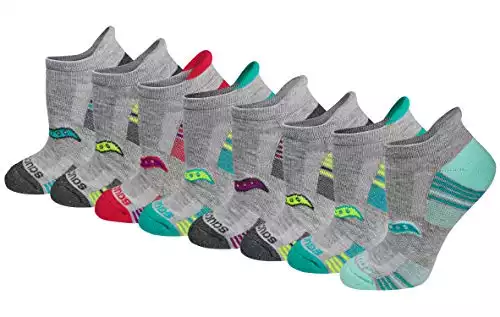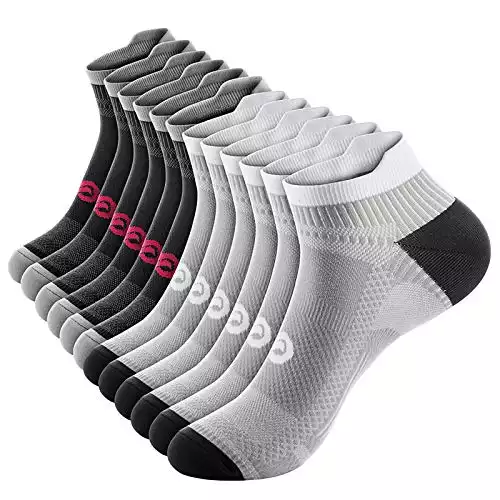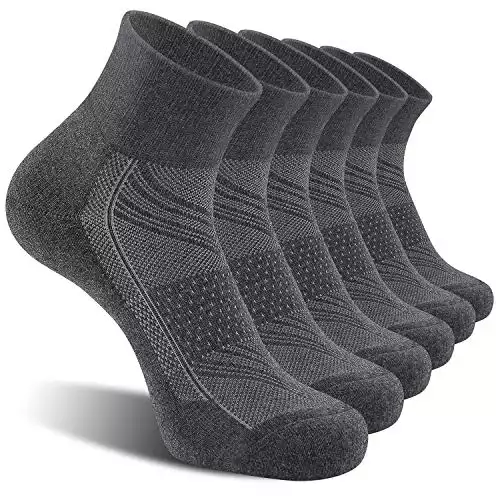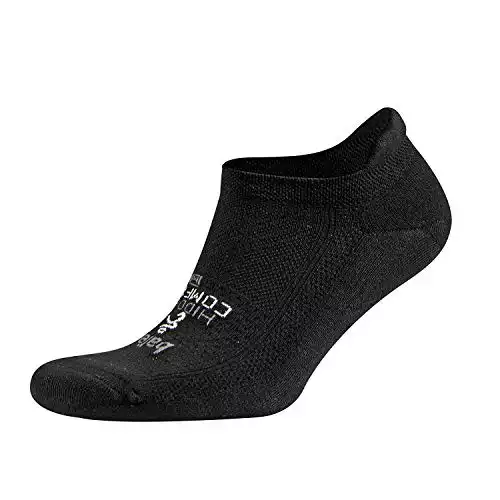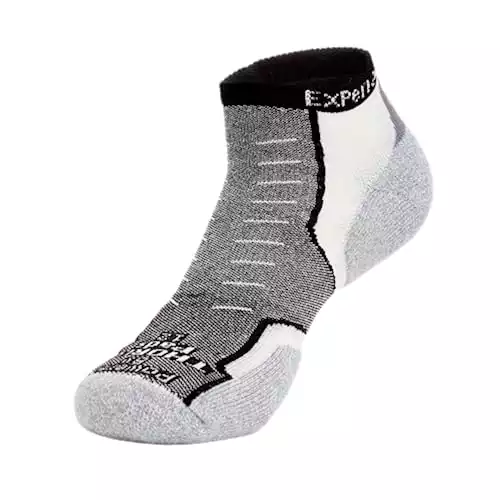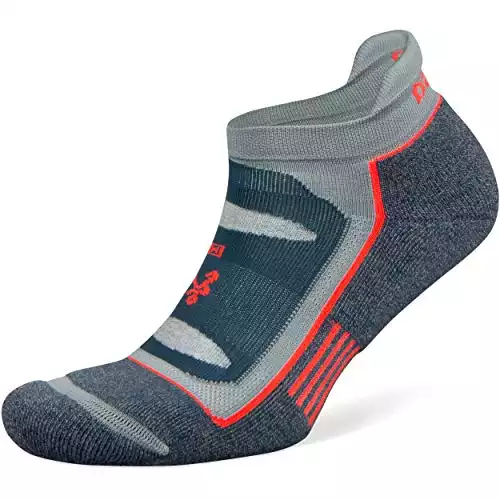When I go out on a run I always wear the same type of socks each time. I like to use my bamboo socks because they are thin, they stay put, and they wick moisture well. The nice thing about them is they last a while even though they’re thin.
Running socks tend to last longer than regular your average socks because they are made from high-quality materials. They tend to be constructed well but also cost more. They can last up to twice as long as a cheaper sock.
When I go running, my feet don’t move too much in my shoes, and I usually cut my toenails regularly. This helps my socks last longer. Each person’s circumstances will be different. Let’s find out why running socks last longer and what to do so we can help them last as long as they’re supposed to.
Which Type of Running Sock Lasts the Longest?
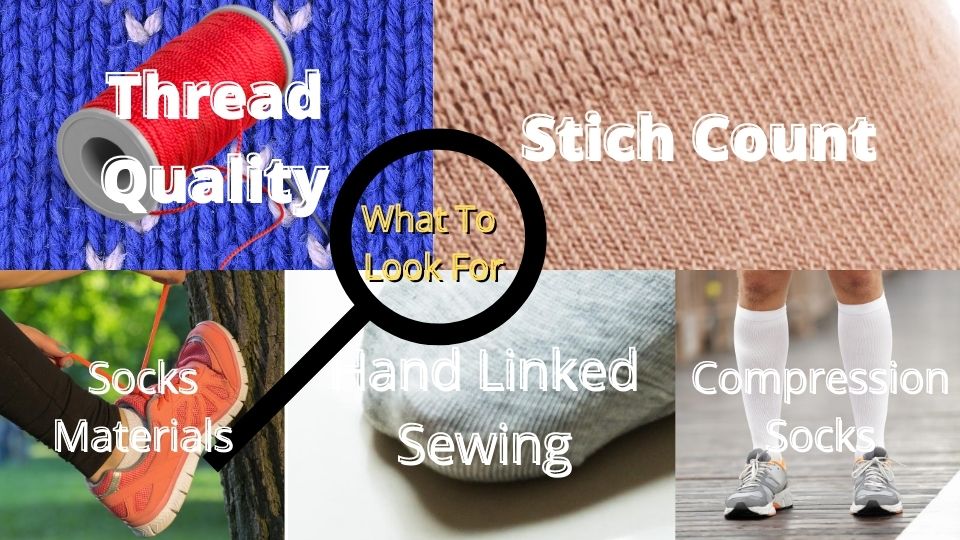
A thicker sock can last longer because there is more material to wear through until a hole is made, but a thin sock can last just as long. Why?
Each sock can be made of higher or lower-quality materials and types of stitching. When looking for a long-lasting sock, find one that is generally a higher quality sock and it will likely last longer.
Here are 5 characteristics of running socks you want to look for to ensure a longer-lasting sock.
- Check how much synthetic versus natural materials the sock is made of. Synthetic material generally lasts longer.
- How are the socks made? If they are knit together with tight stitching they will last longer. Sometimes, you’ll see the needle count of the sock fabric or the stitches per inch.
- Some running socks are compression socks. How much compression the sock applies around your foot can help the sock from moving, possibly decreasing the wear that occurs.
- This all depends on how well your foot fits in your shoe with your compression running socks. Your foot will always move around a bit, but a snug shoe and sock may reduce the wear on your sock.
- Look for the mmHg (millimeters of mercury) or compression. Light compression would be 8-15mmHG, and heavy compression would be 20-30mmHG.
- The length of the fibers used in a sock will make a big difference. Many fibers are combined together to make a thread or yarn. The longer the fiber’s length, the stronger the thread or yarn becomes.
- So, when you’re running and the fibers are moved around and fiction occurs, they will tend to stay together if they are longer fibers but come apart if there are shorter fibers used.
- You may not find any information on the length of the fibers used, so user reviews are your best bet. Going to the manufacturer’s website may also give you more details than an Amazon.com description.
- Some socks use hand-linked sewing to close the toe box of the sock. This gives the sock a seamless feel. This should prevent rubbing that might cause discomfort and start to wear down the sock.
The determining factor when choosing a long-lasting running sock should not be its thickness but its other characteristics. If you need a thicker sock, then ensure it is a quality sock since running socks tend to be thinner in general.
The longest-lasting socks will not have any cotton, will have a higher stitch count, have quality construction, fit well on your foot, don’t slip in your shoe, and have good reviews.
What Materials Make a Sock Last Longer?
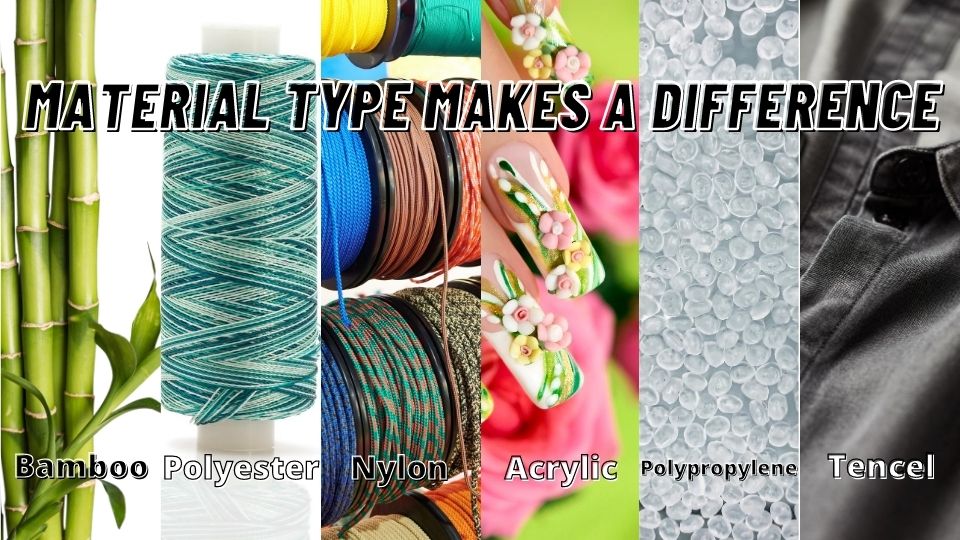
As we discussed before, the quality of the thread matters. Most of the time, the website we are looking at, doesn’t inform the buyer about the quality of the thread, so the next best thing we can do is look at what materials the sock is made of.
Here’s a list of some of the tougher types of materials that socks are made of. I will show the abrasion resistance of each sock fiber.
Each sock may use the same materials but have different grades of thread, so the abrasion resistance may vary, even if a sock has the same percentages of materials used.
Here’s a general idea of how abrasion-resistant each material can be.
- Bamboo – (Abrasion resistance – Average) Its fibers tend to be strong and last a while. It is good for wicking and is very soft.
- Polyester – (Abrasion resistance – High) Also known as a type of plastic, polyester makes socks last longer. It is used in socks often because it is cheap and wicks well.
- Nylon – (Abrasion resistance – High) This fiber wicks well and is tough.
- Acrylic – (Abrasion resistance – Average) It is a durable fiber that is “soft and warm.” (wikipedia)
- Polypropylene – (Abrasion resistance – High) – Like polyester it is also considered a plastic. It is light, good for warmth, and hydrophobic, so it can help keep water away from your feet.
- Tencel, also known as lyocell – (Abrasion resistance – Average) A fiber made from wood pulp; this sock material is soft and absorbent.
- Wool – (Abrasion resistance – Low to Average) – Wool is great for wicking moisture to keep feet dry and warm.
- Spandex – (Abrasion resistance – Average) This material can help compression socks stay on your feet well, although they are damaged when washed with bleach or hot dryer temperatures.
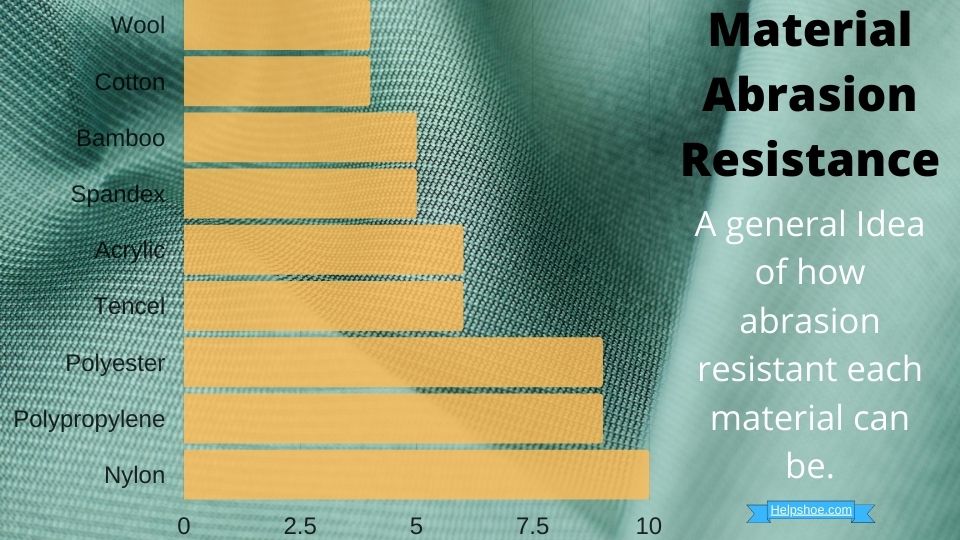
Maybe the best way to find out how durable a sock is is to test them yourself. Buy a pair that suits your needs and interests and test it.
Each runner’s sock will wear down differently. We all have different types of feet, different running styles, and different shoes. These factors, among others, will determine how our socks wear down.
Sometimes, a runner can change how long their sock will last just by changing up how they do one or two things.
What Causes a Running Sock to Wear Down?
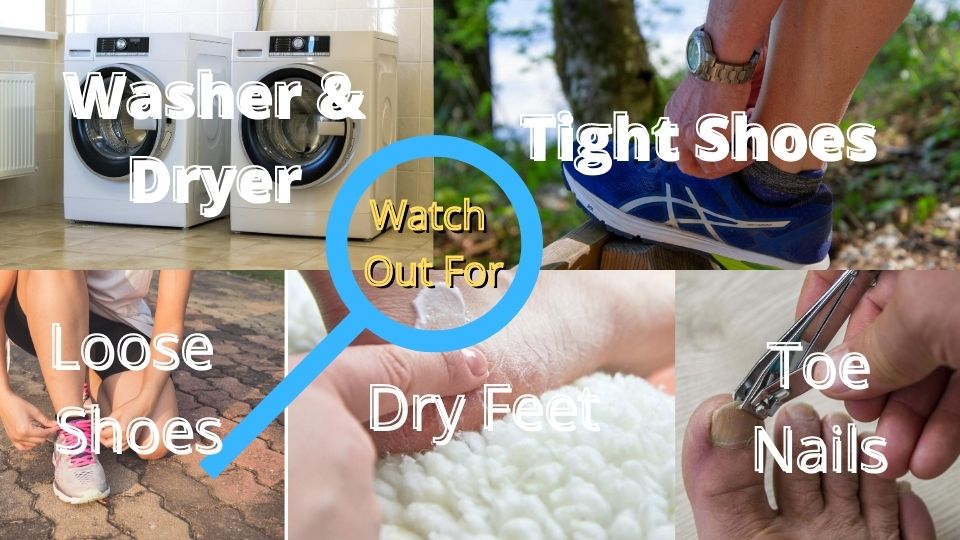
Over time, socks become worn down (article link) due to a number of factors. Here’s a list of 5 reasons socks wear down. Later, I’ll discuss simple ways to prevent premature wear of socks.
Sock Friction – Rubbing that occurs as sock fibers are worn down by various actions and activities. High friction in one area usually causes a hole to appear. Low friction is the goal for your running socks. Here are some types of friction to look out for.
1. Washer & Dryer – Heavy-duty washing and drying cause friction and loss of fibers. Longer cycles cause more friction. Some washers and dryers are old and may be apt to pinch clothing, causing more friction or small rips in sock fibers.
In addition, fabrics lose their strength over time after many wash and dry cycles. “After 20 cycles,” it lost “50 percent of its tensile strength” (reviewed.com)
2. Tight Shoes – Sometimes, we buy shoes that are a bit too tight. They may seem fine at first, but later, we realize they just don’t fit as expected.
If you keep your tight running shoes, you are likely to have rubbing that occurs in certain areas, sometimes between the toes. You may also get blisters or have foot pain due to awkward foot positions.
Your socks will likely start to develop thin spots or holes quicker than normal.
3. Loose Shoes – I’ve worn a couple of loose shoes over the course of my life and what normally happens is my heel wants to lift out of my shoe and this causes rubbing to occur. In addition, rubbing occurs frequently during exercise or running.
Loose shoes have caused me to have the area near the ball of my foot (bunion area) to be rubbed and my heel. Socks can help prevent a lot of rubbing, but they also wear out quickly.
4. Dry Skin – Sometimes, I don’t realize how rough the heel of my foot is until I touch it. Sometimes, I just need to moisturize it for a couple of days and drink more water.
If you have chronic dry skin on your feet, it will impact how long your socks last. Your skin needs to be hydrated and smooth in order to run well.
To run effectively and cause minimal impact on your running socks, ensure your feet are hydrated.
5. Toe Nails – Toenails can have a major impact on whether you develop holes in your socks. Here are three ways that holes can occur.
- Your toe’s nails are too long.
- Your toe’s nails are jagged or split.
- Your toe’s nails are sharp. This usually occurs just after you cut your toenails.
If your nails are rubbing or cutting into your socks, you can develop a hole very quickly.
Friction is likely the number one culprit when it comes to our socks wearing down. Here are some ways to prevent too much friction from prematurely wearing down our socks.
Good Fitting Shoes – Make sure your shoes fit properly. Running shoes may feel different than the shoes you wear normally. If they feel too loose or too tight, double-check that they fit your foot properly.
One way to ensure you have a good fit is to go to a store that specializes in running shoes. They will ensure you get the right fit the first time.
It may be pricey at a running shoe store, but you’re likely to get good-quality shoes that meet your needs. If you are buying shoes online, make sure you can return them and double-check that they are the right fit for your foot. Remember that your feet might swell during a long run, etc.
Trim Your Toenails Correctly – If your toenails are sticking out too far, it’s time to trim them. Cutting once a month is probably OK.
After you cut your nails (article link), you’ll want to file them down a bit to ensure the edges are dull. Any sharp corners or edges, especially on your longer toes, may start to cut holes in your sock.
Check your nails every so often for any sharp edges that may have developed after you have been running. Chipped or cracked nails can grab onto sock fibers and cause wear and tear.
Thick or Thin Socks – If your shoes feel a bit loose, getting a thicker running sock can make a big difference with rubbing. If they are a bit tight, think about getting some thin socks.
Your shoes should allow your toes to wiggle freely yet firmly hold your foot and heel snuggly.
Skin Care – Always make sure your skin is soft and hydrated before any long-distance run or hike. Skin that is hydrated will resist rubbing.
Dry skin will not only start to create friction against your socks, but it will also eventually start to create friction on the skin. Wet skin, when rubbed, will start to chafe, and skin will become raw.
Runners often use high-quality socks and shoes, anti-chaffing creams or sticks, and tape to prevent rubbing from occurring. So when your feet get moist, you have a defense against rubbing by ensuring your skin is properly taken care of.
We can avoid the friction that makes a perfectly good sock wear down or tear apart in just one day if we are careful. The key is to take care of our feet and ensure we have good-fitting socks and shoes.
Bargain Running Socks VS Quality Running Socks
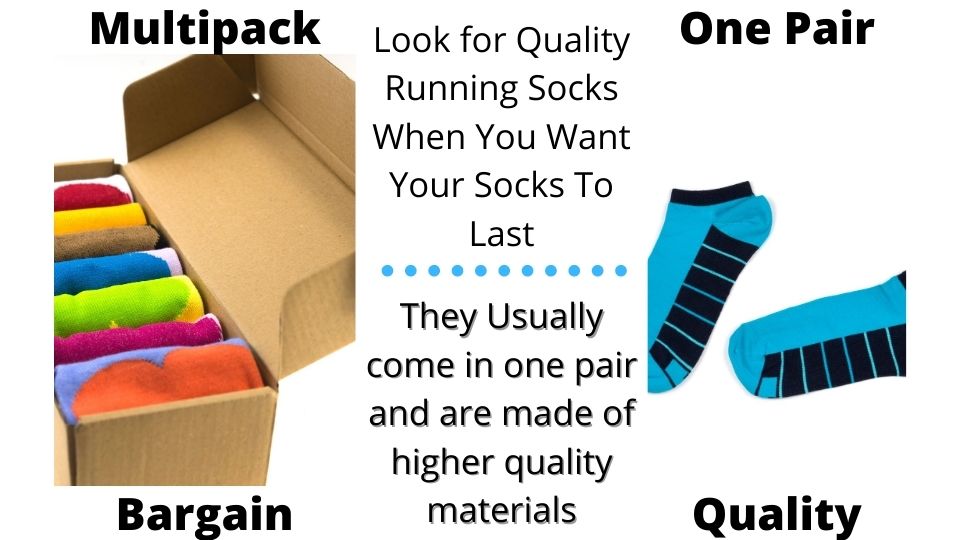
When you go on a casual run, you’re likely going to be fine with casual running socks. They might be the cheap multipack polyester cotton blend (Amazon Link) socks that work just fine for most short athletic activities.
But, if you are going to be engaging in some more demanding activities, like running longer than 30 minutes, then you’ll want to invest in a sock that is better quality.
Higher-quality socks will not only last longer but give you more benefits while running. Some of the benefits you might see are shown in the following chart.
| BARGAIN SOCKS | QUALITY SOCKS |
|---|---|
| Cheaper cost material – Usually more cotton | Higher Cost Materials – More Polyester, Nylon, Spandex, ETC |
| Wear Down Faster | Last Longer |
| Low-Quality Stitching | Better Stitching and Toes Seams |
The best way to see if a sock is of good quality is to try it out. High-quality socks can make a big difference if you are running long distances. They can help you prevent the rubbing that normally occurs during the long run.
Take a look at this chart for some socks that might be helpful for either your casual running activities or more demanding running activities.
BARGAIN SOCKS
| Product Image | Product Name / Price | Primary Button |
|---|---|---|
QUALITY SOCKS
| Product Image | Product Name / Price | Primary Button |
|---|---|---|
Conclusion
While I don’t have any data on how long specific socks will last, you can get a very good idea by looking at the type of materials used in a sock and the quality of construction.
Running socks that cost more and use better materials ensure that runners can have a positive experience while running. These materials usually last longer because they are synthetic and have a higher level of abrasion resistance.
Good luck with getting the socks you feel are the best fit for your needs. As for me, I continue to wear my bamboo socks because they work best for me. Thanks for visiting and reading this article.
Thanks for visiting Helpshoe.com
References
https://www.wellrigged.com/durable-socks/
https://sockdrawer.com/pages/fiber-content
https://en.wikipedia.org/wiki/Acrylic_fiber
https://www.reviewed.com/laundry/features/how-dryers-destroy-your-clothes


